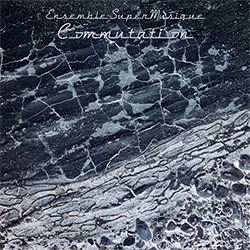
Ensemble Supermusique, Montreal's premiere open-minded improvising ensemble, here led by saxophonist & vocalist Joane Hetu and conducted by percussionist Danielle Palardy Roger, present a live concert of graphic scores dating back to 1920, with works from Fred Frith (Stone, Brick, Glass, Wood, Wire), Luigi Russolo, Maxime Daigneault, Emilie Girard-Charest & Anestis Logothetis.
In Stock
Quantity in Basket: None
Log In to use our Wish List
Shipping Weight: 3.00 units
EU & UK Customers:
Discogs.com can handle your VAT payments
So please order through Discogs
Sample The Album:
Joane Hetu-alto saxophone, objects, voice, conductor
Cleo Palacio-Quintin-Quintin, flutes
Jean Derome-baritone saxophone, flutes, objects
Elizabeth Millar-clarinet
Philippe Lauzier-bass clarinet
Craig Pedersen-trumpet
Scott Thomson-trombone
Julie Houle-tuba
Alexandre St-Onge-electric bass, electronics
Vergil Sharkya-analog synthesizers
Preston Beebe-percussion
Isaiah Ceccarelli-drum kit
Emilie Girard-Charest-Charest, cello
Danielle Palardy Roger-conductor
Click an artist name above to see in-stock items for that artist.
Includes an 8 page foldout booklet with images of the scores and text in English and French.
UPC: 771028125524
Label: Ambiances Magnetiques
Catalog ID: AM_255
Squidco Product Code: 31614
Format: CD
Condition: New
Released: 2022
Country: Canada
Packaging: Cardboard Gatefold
Recorded live in concert at Le Vivier, in Montreal, Canada, on November 22nd, 2018, by Maxime Audet-Haide.
"Data sharing - transfer - succession - transmission - change - replacement - renewal... Commutation continues its exploratory adventure through the vast universe of graphic scores. For the occasion, Joane Hetu and Danielle Palardy Roger have gathered an ensemble featuring winds, electronics and percussion to play scores from the 1920s until today. A century separates the pieces by Luigi Russolo and Emilie Girard-Charest, do you hear it?"-Ambience Magnetiques
"Despite the way it's being dressed up Commutation is a cover, or reinterpretations, album. Each of the eight tracks is a graphic score written by different composers. This means that the composer used visual symbols to create the notation, rather than traditional musical notation. The five composers, Luigi Russolo, Emilie Girard-Charest, Anestis Logothetis, Fred Frith, Maxime Daigneault, span 100 years of music and culture. What is remarkable that Ensemble SuperMusique plays them in a way that you can't really tell what era they are from. This is down to the ensemble using a collection of winds, electronics, and percussion to make them sounds contemporary. A prime example is 'Pour l'heure', one of the standout moments. Instead of using strings, Ensemble SuperMusique re-score it is using electronics, as well as organic sounds. The playing is sparse but forthright. The horns give 'Pour l'heure' a sinister vibe that might have been missing on the original score. The final third, with its bellowing horns and scratchy field recordings, really define the mood of the piece and act as a bookend to how it starts.
In the middle of the album is a suite of Fred Frith's four 'Stone, Brick, Glass, Wood Wire' compositions. This is the most important section on the album. On this the album hangs. Original a live double album by Frith these performances take his ideas and run with them. Ensemble SuperMusique's versions have the same vibe, slightly wonky and eerie, but they ramp up the tension in the way that Frith's versions don't. Underpinning all the songs is this junk table aesthetic. Throughout assorted things are being rattled, shook, and jingled. The effect is unsettling, but you can't look away. Just like in a horror film you have to watch the gruesome imagery; despite being warned by the music. The same is true here.
The albums downside is that it is all a bit oppressive. There is no space between the notes being played. Now, I can't work out if this is down to the way Ensemble SuperMusique has decided to play the pieces of music or if they purposely picked music that would give them the ability to reinterpret the music this way. Given that these are graphic scores it's hard to know. The only downside to this is that these versions might lose some fluidity to what the originals had. Saying that Commutation is a glorious piece of music that makes us think about how technology is used and what happens with the data after our task has been completed."-NR, Vital Weekly
Includes an 8 page foldout booklet with images of the scores and text in English and French.
Get additional information at Vital Weekly
Artist Biographies
• Show Bio for Joane Hetu "Joane Hétu. Born Montréal, Québec, 1958. Residence: Montréal, Québec. Composer, Performer (alto saxophone, voice), Author/ It has been more than 30 years now since self-taught composer, vocalist and saxophonist Joane Hétu has been following her own highly distinctive path through the vast territory of creative, contemporary music. From her beginnings with song-based new-rock bands such as Wondeur Brass, Justine and Les Poules, Hétu turned to composition (the evocative triptych comprising Musique d'hiver, Filature and La femme territoire ou 21 fragments d'humus) and improvisation, more often than not combining both within her general approach to music. She has co-directed the Ensemble SuperMusique since its founding in 1998, as well as the weekly series Mercredimusics since 2002. More recently she gave birth to La chorale bruitiste Joker (2012). Joane Hétu was awarded the prestigious Freddie Stone Award in 2006." ^ Hide Bio for Joane Hetu • Show Bio for Cleo Palacio-Quintin "Cléo Palacio-Quintin. Born Leuven, Belgium, 1971, Residence: Montréal, Québec. Composer, Performer (hyper-flute). Constantly seeking new means of expression and eager to create, the flutist-improviser-composer Cléo Palacio-Quintin takes part in many premieres as well as improvisational multidisciplinary performances, and composes instrumental and electroacoustic music for various ensembles and media works. Since 1999, she develops her hyper-flutes. Interfaced to a computer by means of electronic sensors, these augmented flutes enable her to compose interactive soundscapes, combining instrumental sound and electroacoustic music, sometimes even with video. Recipients of many prizes, awards and grants, she is the first woman to receive a Doctorate in electroacoustic composition from the Université de Montréal (2012) and is a collaborator at the Center for interdisciplinary research in Music Media and Technology (CIRMMT). Over the years her compositions have been performed in The Netherlands, Norway, Denmark, France, Germany, Italy, Belgium, Sweden, Switzerland, the UK, Canada and the USA, either by herself or various ensembles." ^ Hide Bio for Cleo Palacio-Quintin • Show Bio for Jean Derome "Jean Derome. Born Montréal, Québec, 1955. esidence: Montréal, Québec. Composer, Performer (saxophones (alto, baritone, soprano), flutes (flute, bass flute, piccolo, alto flute, recorders), keyboards, small wind instruments (ocarinas, jew's harp, game calls, toys...), percussion, invented instruments, voice) One of the most active and eclectic musicians on the Canadian creative music scene, Jean Derome has managed to earn the recognition of a larger public, a rare feat in that field. Thanks to his large-scale musique actuelle projects, his compositions, his work as an improviser, his jazz groups and his music for the screen and the stage, Derome ranks as a major creative force, in Québec and abroad. He is experienced and innovative on both saxophone and flute, and his unique writing style cannot be mistaken for anyone else's. Sensitive and powerful, his music often features a funny strike that makes its complex nature more inviting. Ever since Nébu (one of Québec's first avant-garde jazz groups) in the early '70s, Derome has been consistently renewing and diversifying his approach of composition. He impressed audience and critics first with the flute, then with the saxophone, as a lead character in the musique actuelle underground. He took part to the various artists' collectives looking for new ways to express themselves freely, without esthetic or social constraints, including the Ensemble de musique improvisée de Montréal. Later, in the early '80s, he co-founded Ambiances Magnétiques, a collective and record label that raised his profile at home and introduced his name to the outside world. Among his numerous projects, let us mention the duos Les Granules, Nous perçons les oreilles and Plinc! Plonc!, the dynamic group Jean Derome et les Dangereux Zhoms, and the large-scale projects Confitures de gagaku, Je me souviens - Hommage à Georges Perec and Canot-camping. Most of these projects are based on a unique form of synergy between composition, structured improvisation and genuine creative madness, all this articulated with unmatched playfulness. In 1992, Derome became the second artist to be presented with the Freddie Stone Award (bassist Lisle Ellis was the first). Besides improvising on a regular basis with Ambiances Magnétiques' members and appearing in their projects, Derome has also shared the stage with several musicians of international stature, among others Fred Frith, Lars Hollmer, Louis Sclavis and Han Bennink. He performs regularly all over Canada, in the US and in Europe. He received a Prix Opus in 2001 for his exposure abroad. Lately, jazz circles have been praising his undisputable qualities as a jazzman, thanks to the Thelonious Monk tribute project Évidence, the Normand Guilbeault Ensemble (whose Mingus Erectus CD is devoted to Charles Mingus' music), and the much-lauded Derome Guilbeault Tanguay Trio. Although Jean Derome writes tirelessly for his own projects, he is much in demand in the fields of film, theatre and dance. A short list of this side of his work would have to include his numerous scores for the National Film Board of Canada (NFB), especially for films by John Walker, Jacques Leduc, Fernand Bélanger and animated films by Pierre Hébert, Michèle Cournoyer and Jean Detheux; his incidental music for Théâtre UBU, Théâtre de Quat'Sous and Théâtre du Nouveau Monde; not forgetting his work with several top choreographers, including Louise Bédard, Andrew de Lotbinière Harwood, Daniel Soulières and Ginette Laurin. Other music ensembles have commissioned works from him, including Tuyo, Bradyworks, the Hard Rubber Orchestra from Vancouver and Fanfare Pourpour. Incidentally, Derome is the musical director of the latter. Over thirty years of music and 70 record credits later, Jean Derome still has sleeves bursting with tricks." ^ Hide Bio for Jean Derome • Show Bio for Elizabeth Millar "Elizabeth Millar is an experimental musician, sound-artist and clarinetist, based in Montreal since 2009. Engaging with sound, noise, free improvisation and self-made instrument building, her creative practice explores the merging of acoustic and electronic textures using amplification and extended techniques. Active locally, nationally and internationally she has performed throughout Canada and in Australia, Japan, Taiwan, Vietnam, Malaysia, Singapore and Mexico. Alongside her solo work, she is also one member of Sound of the Mountain, an amplified clarinet and trumpet duo with Craig Pedersen. She performs regularly with Montreal-based Ensemble Supermusique and with a variety of collaborators, including Érick d'Orion, Joane Hétu, Anne-F Jacques, Tetuzi Akiyama and Toshimaru Nakamura. She is co-founder of Mystery & Wonder Records. Her 2019 solo release no instrument machine, air, extends the timbral and textural scope of her work with amplified clarinet, adding machine hums, metallic resonances and low frequency air noise, generated by self-made instruments made from recycled electronic components. Recent highlights include performances at Open Waters Festival Halifax (2019), Rencontres de Musique Spontanée Rimouski (2019), IMOO Festival Ottawa (2019, 2018), Open Ears Festival Kitchener Ontario (2018), Make It Up Club Festival Australia (2018), Codes d'Access Montreal (2018), Suoni per il Popolo Festival Montreal (2019, 2018, 2017) and KLEX festival Malaysia (2017); a residency with Tone List in Perth, Australia (2018) and a 3-month independent residency in Tokyo (2017)." ^ Hide Bio for Elizabeth Millar • Show Bio for Philippe Lauzier "Composer, improviser, instrumentalist (clarinet & saxophone) and sound artist, Philippe Lauzier participates in several projects that tour regularly in Canada and Europe, but also in USA, Latine America and Australia. In his solo and collective work, his ideas incorporate influences of contemporary musical languages as well as sounds from non-Western sources. Creative extended techniques, complex drones from which polyphonies emerge, and a certain compositional rigour are typical of his style. His interest for collaborative intermedia practices also leads him to create sound installation pieces, live performances for contemporary dance, theater music and many sound designs for visual art projects. Philippe lives in Montreal, Quebec." ^ Hide Bio for Philippe Lauzier • Show Bio for Craig Pedersen "Craig Pedersen is a trumpet player, composer, and educator based out of Montréal. He actively leads his own bands, the Craig Pedersen Quartet and the It's A Free Country duo (with Joel Kerr), and co-directs the Musique a La Poele series in Montreal. He also co-founded the Improvising Musicians of Ottawa/Outaouais Concert (IMOO) Series. Since its inception in 2010, IMOO has served as a hub of improvised music in Ottawa, presenting both local and international artists. Craig has released eight albums worth of material, ranging between composed material to improvisation, and has collaborated with Lori Freedman, Nicolas Caloia, Evan Tighe, Aaron Lumley, Ian Birse and Laura Kavanaugh (Instant Places), Joel Kerr, and Mark Molnar (Kingdom Shore), as well as recording on the soundtrack for Robert Lepage's Needles and Opium, and performances at L'Off Festival du Jazz, and FONT Canada. He has recently written a method book of extended techniques for the trumpet, to published by Berklee Press and Hal Leonard in November of 2014. Mark Molnar plays strings and electronics with Kingdom Shore, 1/4 Tonne Spike Pitcher (Nick Keupfer and Eric Craven), Generator (John Higney and Jamie Gulliksen), Mice (Bennett Bedoukian and Dave Clark), and in duos and a variety of configurations with Eric Craven, Craig Pedersen, James Annett, David Broscoe, Jamie Gulliksen, Linsey Wellman, and Bennett Bedoukian. He also plays erhu and rebab in Gamelan Semara Winangun." ^ Hide Bio for Craig Pedersen • Show Bio for Scott Thomson "Scott Thomson is an improvising trombonist and composer. He works extensively with singer and dance artist, Susanna Hood, and writes songs for her based on published authors' texts to be played in many contexts, from duo to octet and sometimes including Susanna' s choreography. Monicker (with Arthur Bull and Roger Turner), for example, exemplifies Scott's commitment to open improvisation. He co-founded the Association of Improvising Musicians Toronto (AIMToronto) in 2004 and served as a director until 2009, and co- directed the AIMToronto Orchestra, formed for a project with Anthony Braxton in 2007. In 2016, he convened the Montreal-Toronto Art Orchestra to play Roscoe Mitchell's music. He founded Somewhere There, a Toronto creative music venue that hosted 850 concerts during his tenure, 2007-10. Scott has composed a series of site- specific works, "cartographic compositions" for mobile musicians and audiences in unconventional performance contexts including, notably, the National Gallery of Canada and the Art Gallery of Ontario. Scott programs the Guelph Jazz Festival." ^ Hide Bio for Scott Thomson • Show Bio for Julie Houle "A native of central Quebec, Julie Houle has been a tuba player for 15 years. She has a classical university education. She is also an interpreter-composer-arranger. Since 2007, she has devoted herself to different styles (gypsies, fanfare, pop, jazz, improvisation, etc.). In 2007 she will follow a master class with Michel Godard in Villeurbane in France. The meeting of this mentor was also repeated in France, in January 2013 for a series of courses in private. Julie swells, by her desire to make her tuba heard, worked with artists such as; David Brunet, Marco Calliari, The Gypsies of Sarajevo, Catherine Major, Fred Pellerin, Benoit Rocheleau, Brigitte Ste-Aubin, Bernard Adamus, the Fanfarniente de la Strada, the Jarry fanfare, the Severni fanfare, Sophie Vaillancourt, etc. In addition, she now has in hand her own DJU project that offers instrumental music where the tuba is put forward." ^ Hide Bio for Julie Houle • Show Bio for Alexandre St-Onge "Alexandre St-Onge. Born Montréal, Québec, 1976. Residence: Montréal, Québec. Composer, Performer (double bass). Alexandre St-Onge is an audio artist, a musician/improviser (acoustic bass, bass, voice and electronics) and a sound performer. He has studied literature and philosophy and he is currently doing his PhD in art. He is fascinated by creativity as a pragmatic approach of the ineffable and he has released seven solo CDs: Entités (Oral), Joseph Carey Merrick (Oral), Mon animal est possible (Alien8 Recordings), L'amitié ou les rumeurs insoutenables du désir (Squint Fucker Press), kasi naigo (Squint Fucker Press), Une mâchoire et deux trous (Namskéio Records), Image/négation (Alien8 Recordings). He also plays in quite a few bands, including Et Sans, K.A.N.T.N.A.G.A.N.O., Klaxon Gueule, Pink Saliva, Mineminemine, Shalabi Effect and Undo. As a composer he has worked for interactive/mixed-media company kondition pluriel, as well as composing for artists such as Marie Brassard, Karine Denault, Lynda Gaudreau, Line Nault, Jérémie Niel, Maryse Poulin and Mariko Tanabe." ^ Hide Bio for Alexandre St-Onge • Show Bio for Vergil Sharkya "Vergil Sharkya'. Residence: Montréal, Québec. Composer, Performer (synthesizer) In 2010 Vergil Sharkya' finished a major research project in composition for his doctoral degree at Liverpool's John Moores University, developing a complete theory of hypercomposition, featuring as well examples of its practical application. His most recent hypercomposition - aTTAK, for piano, suspended toy piano, and digital instruments -, was commissioned for and performed at the opening of the Aufbau Haus, Berlin, in September 2011. Vergil is also a well established composer/musician in the fields of improvised music, multimedia installations, post-modernist composition, scores and soundtracks for film, theatre and dance, composition and arrangements for orchestras, soundscapes, psychedelic noise rock, drum'n'bass, dub, and even academic research. He has released several recordings on various labels like Cuneiform Records, UKsupersonict and VergilReality Recordings. Since moving to Montréal in July 2010, he has been working mainly but not exclusively in the field of improvised music with musicians such as Jean Derome, Michel F Côté, Simon Pagé, Augustus Martin, Ellwood Epps, Philippe Battikha, as well as with writers Martin Lamothe, and Serge Rivest Martimots. He currently spends his spare time cooking, doing housework for his lovely family and learning how to play jazz." ^ Hide Bio for Vergil Sharkya • Show Bio for Preston Beebe "Preston Beebe is a composer and percussionist who uses technology at the forefront of his work. His artistic approach involves audio feature extraction, organic processes, microscopic and invisible elements and how they interact in space and time. Spanning chamber, live-electronic, acousmatic, art installation, improvisation, and site-specific performances, his work has been performed in France, Spain, England, Greece, Canada, and the USA. Preston is the recipient of the 2012-2014 CIRMMT Award to develop a digital percussion instrument using audio feature extraction and to compose a series of works for it. From 2014-2015, he attended CURSUS 1 at IRCAM, and composed a work for baritone saxophone & electronics, performed in the Centre G. Pompidou in Paris. Preston holds a masters in music composition from McGill University; bachelors in music composition, electronic music, and percussion performance from the University of South Florida. He has studied composition with Philippe Leroux, Hector Parra, Chihchun Chi-sun Lee; percussion with Robert McCormick; lessons and workshops with Brian Ferneyhough, Chaya Czernowin, Yan Maresz, Trevor Wishart, Augusta Read Thomas, and Dai Fujikura. Released on Kohlenstoff Records, Preston can be heard performing with his percussion duo, 4eyes, on the album mountain and with his prepared piano & percussion duo Whim Ensemble. He was a member of the McCormick Percussion Group and performed on the albums Music For Keyboard Percussions and Concerti For Strings With Percussion Orchestra, distributed through Naxos. In 2011 he released an album of his acousmatic music, Glisten." ^ Hide Bio for Preston Beebe • Show Bio for Isaiah Ceccarelli "Isaiah Ceccarelli. Born Chetwynd, British Columbia, Canada, 1978. Residence: Montréal, Québec. Composer, Performer (drum set, percussion). Isaiah Ceccarelli is a drummer, improviser, and composer based in Montréal. His music has been qualified as "one of the most original approaches to come through our offices in recent times" (Marc Chénard, La Scena Musicale) and he has been described as possessing "a writing style with rare personality in this musical context" (Thierry Lepin, Jazzman Magazine). He participates in numerous creative music projects with Michel F Côté, Pierre-Yves Martel, Lori Freedman, Jean Derome, Bernard Falaise, Joshua Zubot and Philippe Lauzier, amongst others. He plays with Félix Stüssi and Ray Anderson, as well as with the Acadian singer Marie-Jo Thério. Proud ambassador of a new generation of creative musicians in Québec, his collaborations have led him on tour in Europe, North America, Asia and Australia. Isaiah has composed music for two of his own albums, Bréviaire d'épuisements and Lieux-dits (both on the Ambiances Magnétiques label), and for ensembles and musicians such as Quatuor Bozzini, Ensemble Allogène, the violist Jennifer Thiessen, and Ensemble Kô. He sings with the Schola Saint-Grégoire (Gregorian chant). A seasoned musician and composer, Isaiah Ceccarelli is, in the words of Charles Collard from La Scena Musicale, "a jewel in the crown of the Montréal scene and his presence is felt on several fronts at the same time." ^ Hide Bio for Isaiah Ceccarelli • Show Bio for Emilie Girard-Charest "Émilie Girard-Charest. born Laval, Québec, 1987. Composer, Performer (cello). Émilie Girard-Charest is a cellist, a composer and an improviser. As a chamber musician, a soloist and with different ensembles (Allogène, Supermusique, La Machine, Quatuor d'occasion, Stéphane Pécas, Ensemble for New Music Tallinn, duo Collard-Neven-Girard-Charest), she dedicates herself to new music. She has worked with many composers, including Malcolm Goldstein, Michel Gonneville, Maxime McKinley, Joane Hétu, Guillaume Primard, Jean-Luc Fafchamps, Isaiah Ceccarelli, Hans Zender, Graciela Paraskevaidis and Fredrik Gran. Émilie has played at numerous festivals in Québec (Festival de musique actuelle de Victoriaville, OFF Festival de Jazz, Festival de jazz de Montréal, Festival de jazz de Québec, Montréal / Nouvelles Musiques), in the United States (Avant-Music Festival, New York), in Belgium (Ars Musica), in Austria (Klangspuren Schwaz and Impuls), in Chile (Encuentro Internacional de Compositores), in Argentina (Sonido Presente), in Estonia (Autumn Festival), in Finland (MuTe Fest), in Spain (Mixtur) and in Macedonia (Macedonian Music Days). She also played concerts in France, Germany, Russia and Uruguay. In addition to that, she took part in various theatre and dance productions, such as Rhinocéros by Eugène Ionesco (Troupe Éponyme directed by Jocelyn Sioui), Couloir et Chambres by Philippe Minyana and La fête à Jean by Pierre-Luc Lasalle (Théâtre L'Instant, directed by André-Marie Coudou), ADN by Dennis Kelly (Conservatoire d'art dramatique de Montréal, directed by Sylvain Bélanger), the Physical Theater Choir Project (Vicki Tansey), The Sticks (Andrew Tay) and Reine et Oiseaux (théâtre Tête au Corps, Vincent Langlois and Émilie Sigouin). She is now working on a duet with the dancer and visual artist Sarah Bronsard. Émilie holds a degree in cello (Denis Brott) and in composition (Michel Gonneville) from the Conservatoire de musique de Montréal. She is now enrolled as a student in the CoPeCo program (Contemporary Performance and Composition), a joint Master involving the Eesti Muusika - ja Teatriakadeemia (Estonia), the Kungliga Musikhögskolan i Stockholm (Sweden), the Conservatoire National Supérieur de Musique et de Danse de Lyon (France) and the Hochschule für Musik und Theater Hamburg (Germany). She is the recipient of the Bourse de développement de carrière from the foundation of the Conservatoire de musique de Montréal (2014) and of the Prix d'Europe of Composition Fernand Lindsay (2015). ^ Hide Bio for Emilie Girard-Charest • Show Bio for Danielle Palardy Roger "Danielle Palardy Roger. Born Laval, Québec, 1949. Residence: Montréal, Québec. Composer, Performer (drum set, electronic percussion, voice). Percussionist, composer and improviser Danielle Palardy Roger is for the most part self-taught. Active on the Montréal "musique actuelle" scene since 1980, she co-founded the groups Justine, Wondeur Brass and Les Poules. She also founded Ensemble SuperMusique, a shape-shifting ensemble solely devoted to the performance of new music works and improvisation. As a percussionist and improviser, her style is unique: she structures rhythm out of time, communicating a strong, complex narrative by accumulating and layering diverse gestures. She toured Canada, Europe and the United States on several occasions and appeared at several prestigious international events and festivals. In the course of her unique and resolutely independent career, she has worked and shared the stage with Alexei Borisov, DB Boyko, Christopher Butterfield, Nicolas Caloia, Paul Cram, Chantal Dumas, Christine Duncan, Lori Freedman, Fred Frith, Joëlle Léandre, Torsten Mueller, Zeena Parkins, Tenko, the VivaVoce choir, and the Quasar saxophone quartet, among others and in addition to her close collaborators from the Ambiances Magnétiques crowd - Derome, Hétu, Labrosse, Tanguay and Tétreault. Roger's research concerns the integration of improvisation to contemporary music. In that regard, she has worked with composer Marie Pelletier and composed music for the Ensemble Contemporain de Montréal and for Ensemble SuperMusique - the latter a shape shifting ensemble entirely dedicated to improvised music and "musique actuelle." She wrote a Harbour Symphony in 2001 (La grande entente), commissioned by the Musée Pointe-à-Callière in Montréal. Danielle Palardy Roger has made several albums for the Ambiances Magnétiques label, including Tricotage (2000) with French bassist Joëlle Léandre, Bruiducœur, prière des infidèles, an oratorio performed live in Montréal, in June of 2004, Phénix (2008) with the trio Les Poules, and Pas de deux (2008) with British guitarist Fred Frith. Roger is a versatile artist whose projects have consistently brought her back to text, song and declamation. She has penned a large number of songs for Wondeur Brass and Justine, but also composed a musical tale (L'oreille enflée, 1990), a musical theatre (Candide sur une toupie, 1994) and, most importantly, the solo performance Le voyage en Aphasie Mineure (1998) and the oratorio Bruiducœur, prières des infidèles (2004), two works where an exploding language represents the intense realm of communication, the core of the artist's concerns. In juxtaposition to her music career, Danielle Palardy Roger is also general manager and artistic director of Productions SuperMusique (PSM) and is a member of the Ambiances Magnétiques label; in addition to being involved in the field of concert music she is president of the Groupe Le Vivier, which is dedicated to the founding of a place of creation, production and presentation of new music in Montréal." ^ Hide Bio for Danielle Palardy Roger
7/9/2025
Have a better biography or biography source? Please Contact Us so that we can update this biography.
7/9/2025
Have a better biography or biography source? Please Contact Us so that we can update this biography.
7/9/2025
Have a better biography or biography source? Please Contact Us so that we can update this biography.
7/9/2025
Have a better biography or biography source? Please Contact Us so that we can update this biography.
7/9/2025
Have a better biography or biography source? Please Contact Us so that we can update this biography.
7/9/2025
Have a better biography or biography source? Please Contact Us so that we can update this biography.
7/9/2025
Have a better biography or biography source? Please Contact Us so that we can update this biography.
7/9/2025
Have a better biography or biography source? Please Contact Us so that we can update this biography.
7/9/2025
Have a better biography or biography source? Please Contact Us so that we can update this biography.
7/9/2025
Have a better biography or biography source? Please Contact Us so that we can update this biography.
7/9/2025
Have a better biography or biography source? Please Contact Us so that we can update this biography.
7/9/2025
Have a better biography or biography source? Please Contact Us so that we can update this biography.
7/9/2025
Have a better biography or biography source? Please Contact Us so that we can update this biography.
7/9/2025
Have a better biography or biography source? Please Contact Us so that we can update this biography.
Track Listing:
1. Risveglio di una citta 7:03
2. Seuils 13:18
3. Ghia Tin Ora 11:06
4. Stone, Brick, Glass, Wood, Wire - Graphic Scores: . High Tension 3:03
5. Stone, Brick, Glass, Wood, Wire - Graphic Scores: . Vlissingen 3:31
6. Stone, Brick, Glass, Wood, Wire - Graphic Scores: . Reykjavík 2:59
7. Stone, Brick, Glass, Wood, Wire - Graphic Scores: . Dry Stone 3:38
8. Collision 11:07
Improvised Music
Free Improvisation
Jazz
Musique Actuelle
Large Ensembles
Canadian Composition & Improvisation
Hetu, Joane
Jean Derome
Graphic Scores
Frith, Fred
New in Improvised Music
Search for other titles on the label:
Ambiances Magnetiques.
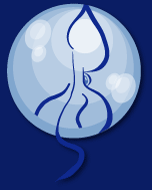

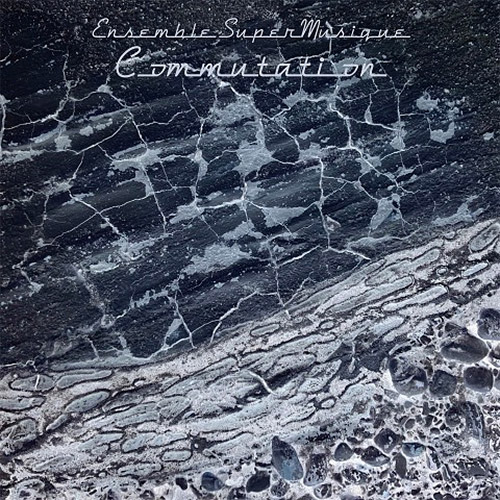
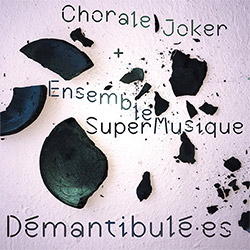
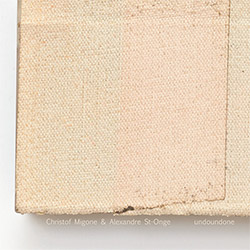
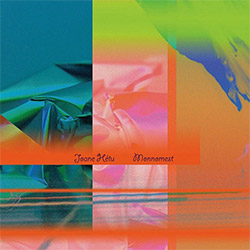
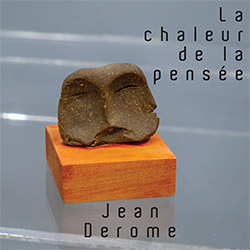

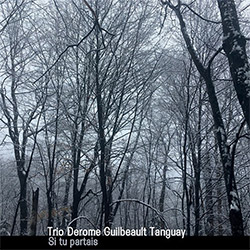
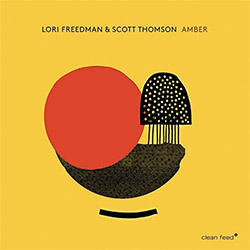
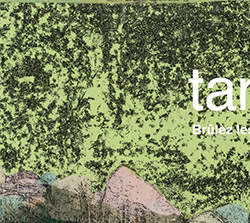
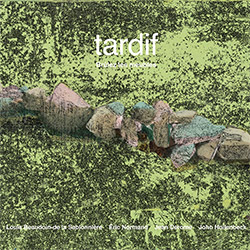
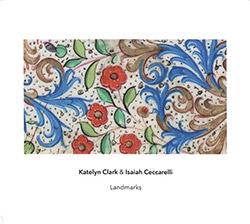
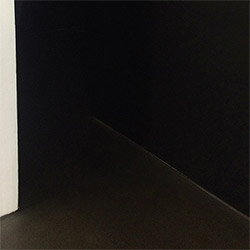
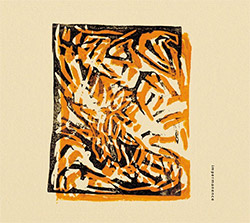
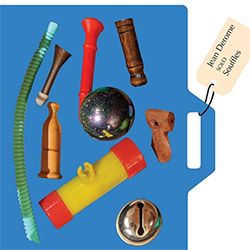

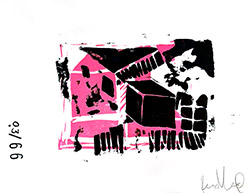
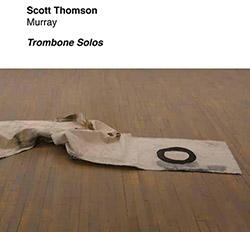
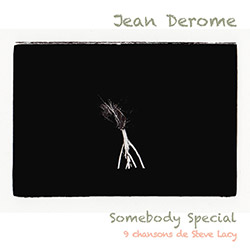
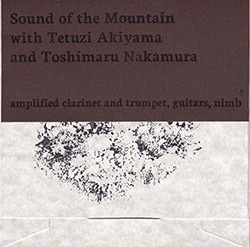
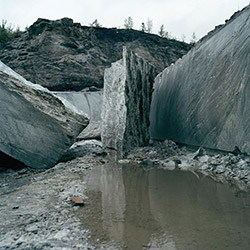
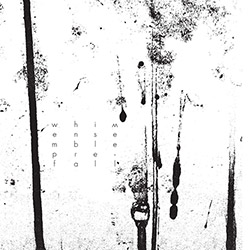
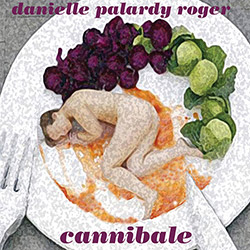
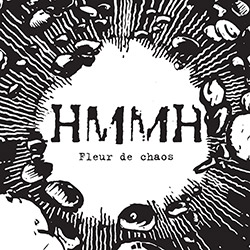
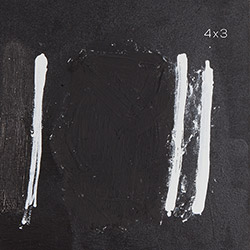
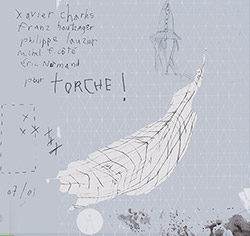
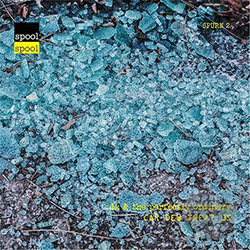
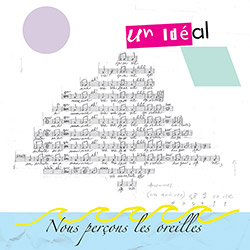

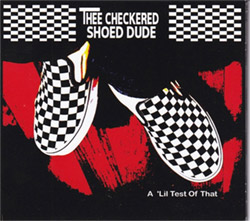
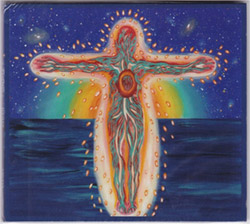
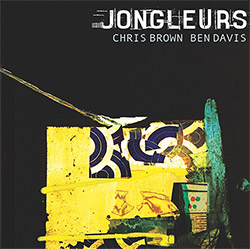
![BlueRing Improvisers: Materia [2 CDs]](https://www.teuthida.com/productImages/misc4/36513.jpg)
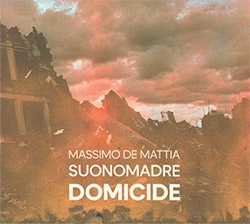
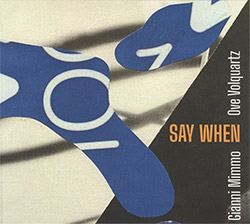
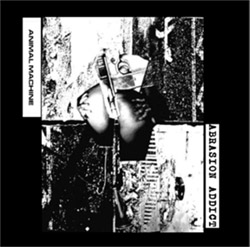
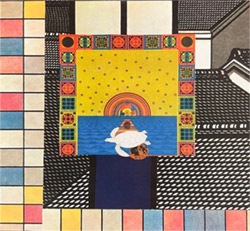
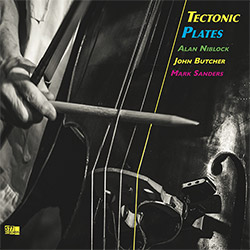
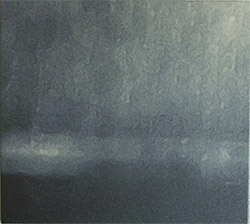

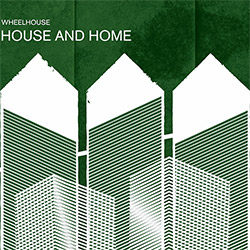
![Wheelhouse (Rempis / Adasiewicz / McBride): House And Home [VINYL]](https://www.teuthida.com/productImages/misc4/36462.jpg)
![+DOG+: The Light Of Our Lives [2 CDs]](https://www.teuthida.com/productImages/misc4/36009.jpg)

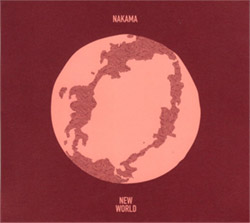
![Parker, Evan / Jean-Marc Foussat: Insolence [VINYL]](https://www.teuthida.com/productImages/misc4/36398.jpg)
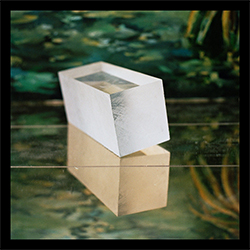
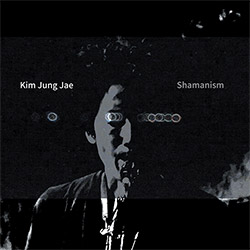
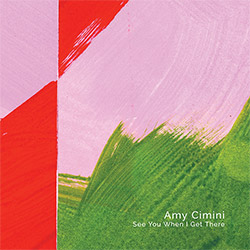
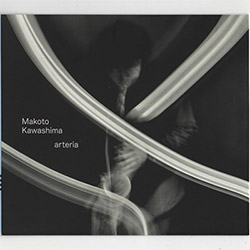
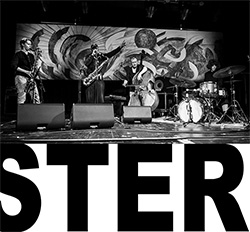
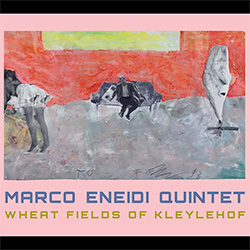
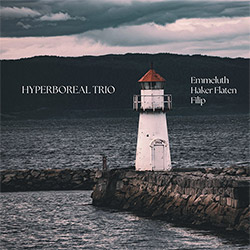
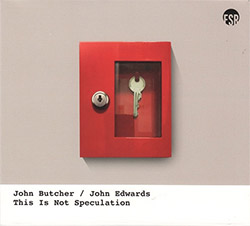
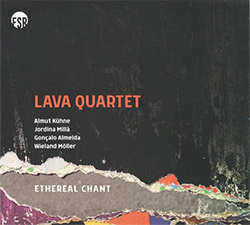
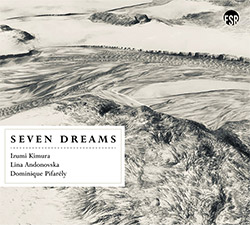
![Deupree, Jerome / Sylvie Courvoisier / Lester St. Louis / Joe Morris: Canyon [2 CDs]](https://www.teuthida.com/productImages/misc4/36404.jpg)
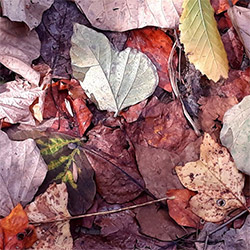
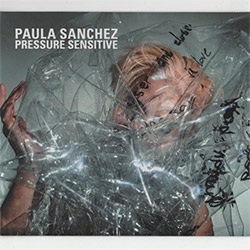
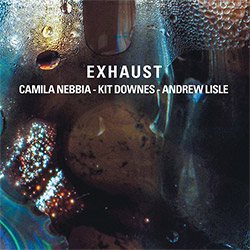
![Eventless Plot | Haarvol: The Subliminal Paths [CASSETTE + DOWNLOAD]](https://www.teuthida.com/productImages/misc4/36232.jpg)
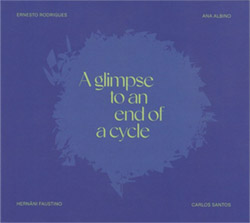
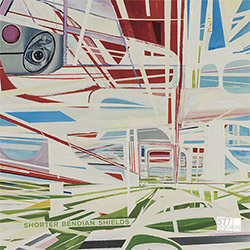
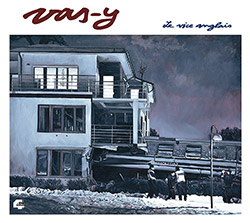


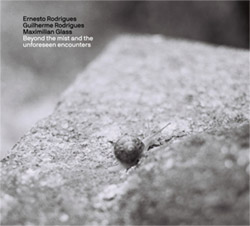

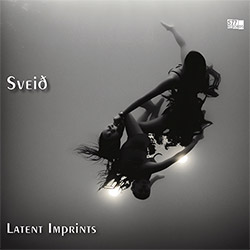
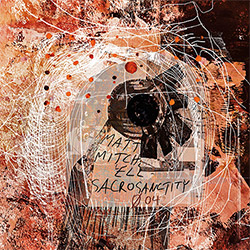
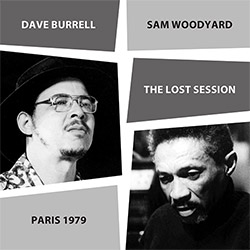
![Eventless Plot | Francesco Covarino: Methexis [CASSETTE + DOWNLOAD]](https://www.teuthida.com/productImages/misc4/36231.jpg)
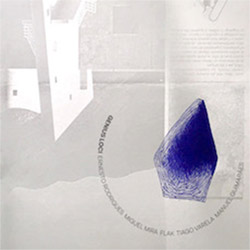
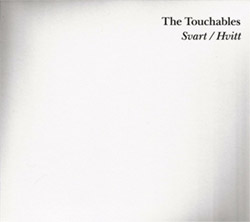
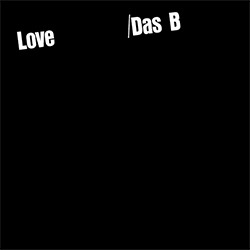
![Das B (Mazen Kerbaj / Mike Majkowski / Magda Mayas / Tony Buck): Love [VINYL]](https://www.teuthida.com/productImages/misc4/36329.jpg)
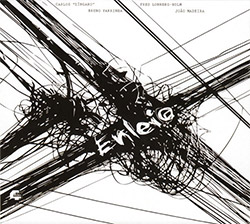
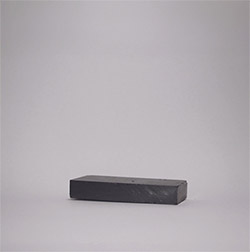
![Eternities: Rides Again [CASSETTE]](https://www.teuthida.com/productImages/misc4/36247.jpg)
![Lopez, Francisco: Untitled (2021-2022) [2 CDs]](https://www.teuthida.com/productImages/misc4/36438.jpg)
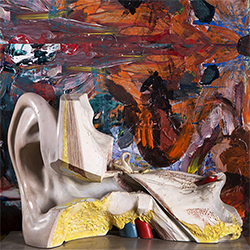
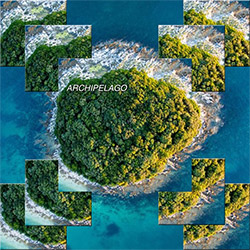
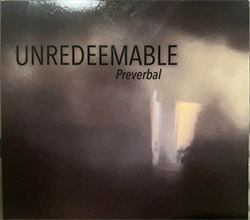
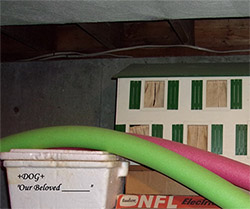
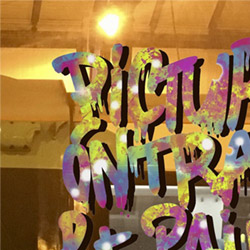
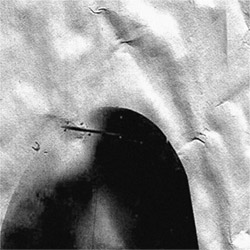
![Money : Money 2 [2 CDs]](https://www.teuthida.com/productImages/misc4/35894.jpg)
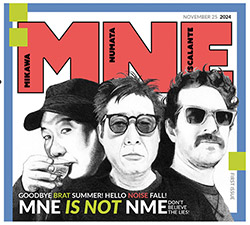
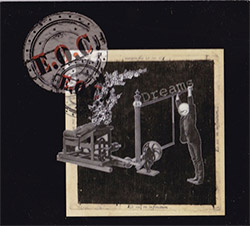
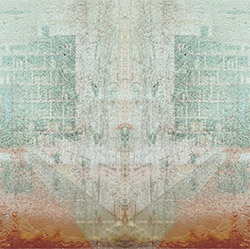
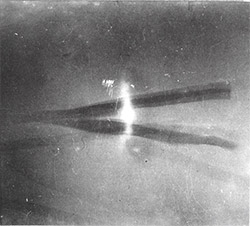
![Klinga, Erik: Elusive Shimmer [VINYL]](https://www.teuthida.com/productImages/misc4/36258.jpg)
![CHANGES TO blind (Phil Zampino): Volume 9 - I Wave on a Fine Vile Mist [CD + DOWNLOAD]](https://www.teuthida.com/productImages/misc4/36061.jpg)

![Wallmart / Rubbish: Asset Protection [split CD]](https://www.teuthida.com/productImages/misc4/35900.jpg)
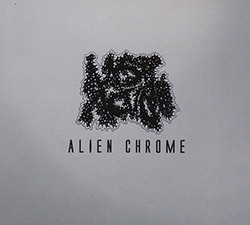
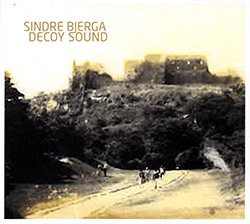
![+Dog+: The Family Music Book Vol. 5 [2 CDs]](https://www.teuthida.com/productImages/misc4/35897.jpg)
![Kuvveti, Deli : Kuslar Soyledi [CASSETTE w/ DOWNLOAD]](https://www.teuthida.com/productImages/misc4/36107.jpg)
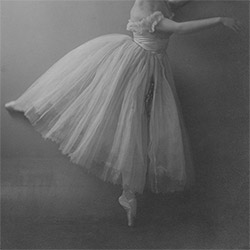
![Brown, Dan / Dan Reynolds: Live At The Grange Hall [unauthorized][CASSETTE]](https://www.teuthida.com/productImages/misc4/36245.jpg)
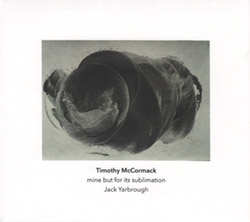

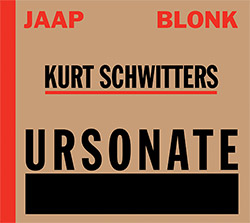
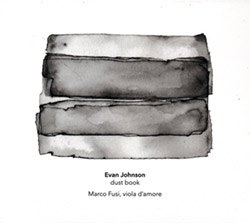
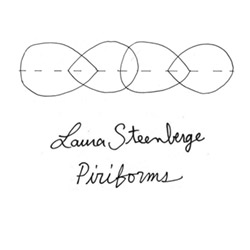
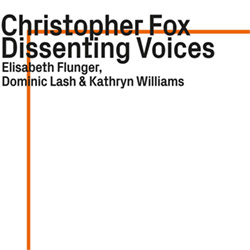
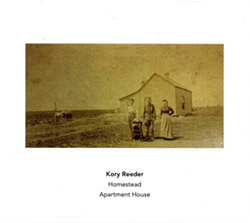
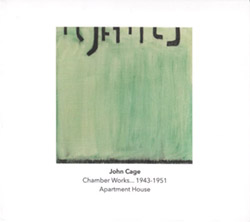
![Palestine, Charlemagne / Seppe Gebruers: Beyondddddd The Notessssss [VINYL]](https://www.teuthida.com/productImages/misc4/36206.jpg)
![Palestine, Charlemagne / Seppe Gebruers: Beyondddddd The Notessssss [NEON GREEN VINYL]](https://www.teuthida.com/productImages/misc4/36207.jpg)
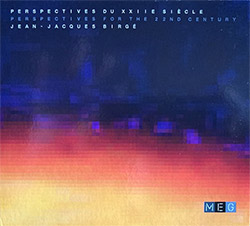
![Laubrock, Ingrid: Purposing The Air [2 CDs]](https://www.teuthida.com/productImages/misc4/35639.jpg)
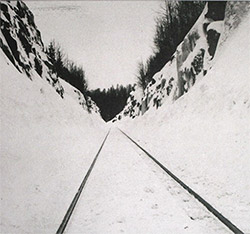
![Yoko, Ono / The Great Learning Orchestra: Selected Recordings From Grapefruit [2 CDs]](https://www.teuthida.com/productImages/misc4/35841.jpg)
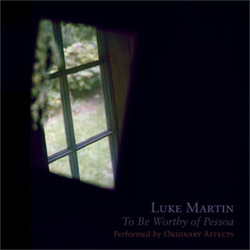
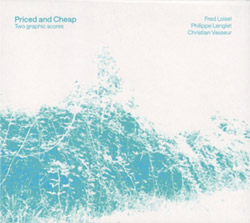
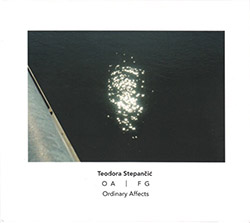
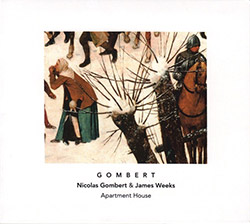

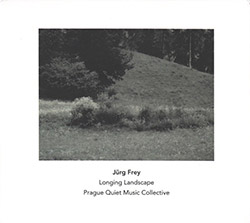


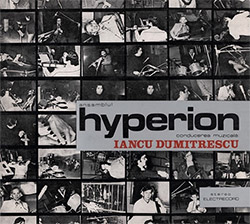
![Zorn, John / JACK Quartet: The Complete String Quartets [2 CDs]](https://www.teuthida.com/productImages/misc4/35609.jpg)

![Lonsdale, Eden: Dawnings [2 CDs]](https://www.teuthida.com/productImages/misc4/35480.jpg)
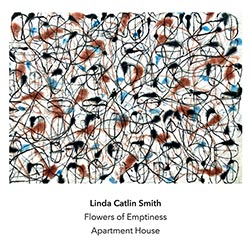
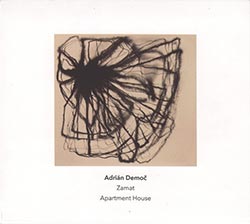
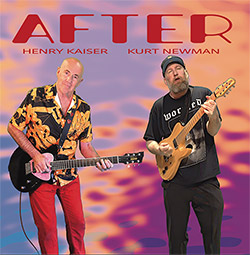
![Sorry For Laughing (G. Whitlow / M. Bates / Dave-Id / E. Ka-Spel): Rain Flowers [2 CDS]](https://www.teuthida.com/productImages/misc4/35985.jpg)

![Rolando, Tommaso / Andy Moor : Biscotti [CASSETTE w/ DOWNLOADS]](https://www.teuthida.com/productImages/misc4/36106.jpg)
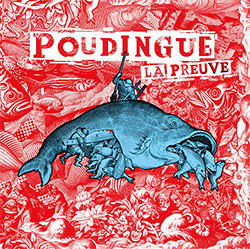
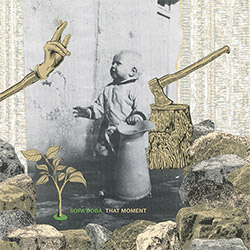
![Electric Bird Noise / Derek Roddy: 8-10-22 [CD EP]](https://www.teuthida.com/productImages/misc4/35970.jpg)
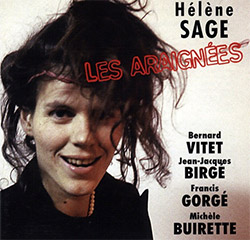
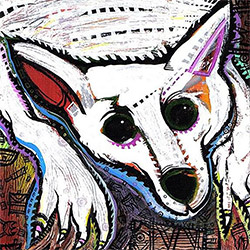

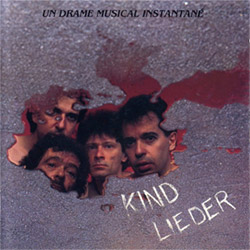
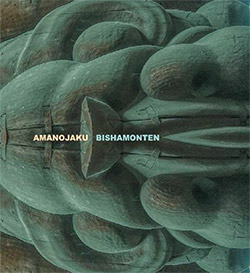
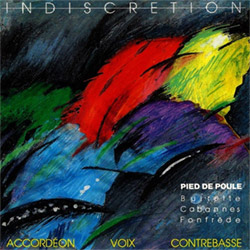
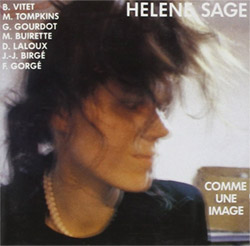
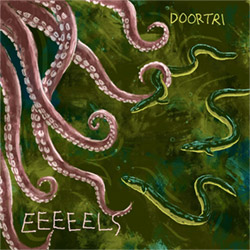
![Elephant9 : Mythical River [VINYL]](https://www.teuthida.com/productImages/misc4/34624.jpg)
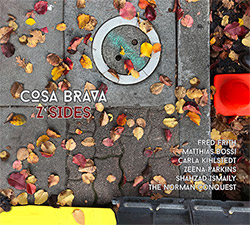
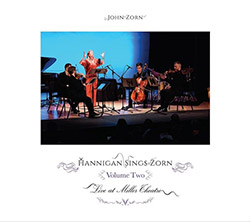
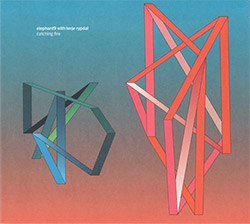
![Elephant9 with Terje Rypdal: Catching Fire [VINYL 2 LPs]](https://www.teuthida.com/productImages/misc4/35355.jpg)
![Deerlady (Obomsawin, Mali / Magdalena Abrego): Greatest Hits [VINYL]](https://www.teuthida.com/productImages/misc4/34876.jpg)
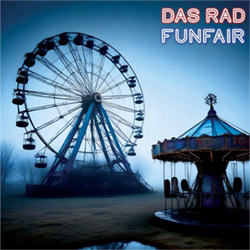
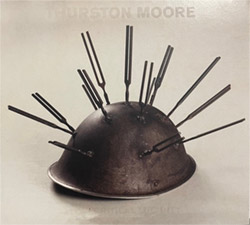
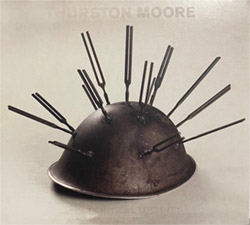

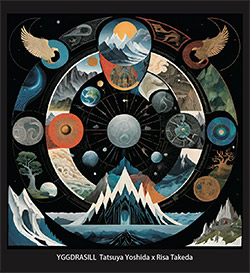
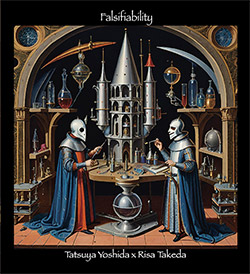
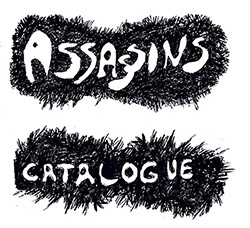
![Surplus 1980: Illusion of Consistency [CD]](https://www.teuthida.com/productImages/misc4/35069.jpg)
![Staiano, Moe: Away Towards the Light [VINYL + DOWNLOAD]](https://www.teuthida.com/productImages/misc4/35037.jpg)
![Coley, Byron: Dating Tips for Touring Bands [VINYL]](https://www.teuthida.com/productImages/misc4/17906.jpg)
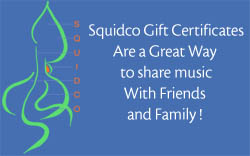
![Lost Kisses: My Life is Sad & Funny [DVD]](https://www.teuthida.com/productImages/misc4/lostKissesDVD.jpg)